It’s safe to say that the Sega Genesis was, and still is no stranger to unsolved mysteries. In the fifteen years since the 16-bitter rode into the gaming sunset, classic gaming enthusiasts have pieced together an impressive compendium of knowledge on the many prototypes, unreleased games and behind-the-scene anecdotes that have come to the surface. Arguably beginning with Simon Wai’s discovery of the infamous Sonic 2 beta many moons ago, the historical narrative of the Genesis continues to expand with stories of what was and what never came to be.
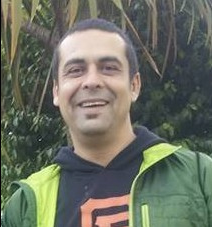 A prime example of that latter sentiment is X-Women. Intended as a follow-up of sorts to Sega’s previously successful X-Men titles, X-Women offered a unique premise by giving top billing to the female members of Marvel’s mutant team. With the technical wizards from Clockwork Tortoise Inc. (The Adventures of Batman & Robin) at the helm, X-Women seemed to be a promising, much needed addition to the Genesis’ anemic 1996 lineup. However, after a brief appearance at E3 1996, a promo video and some scant magazine coverage, X-Women mysteriously disappeared into the ether, almost unnoticed as the 16-Bit consoles gave way to then-newer 32/64-bit hardware.
A prime example of that latter sentiment is X-Women. Intended as a follow-up of sorts to Sega’s previously successful X-Men titles, X-Women offered a unique premise by giving top billing to the female members of Marvel’s mutant team. With the technical wizards from Clockwork Tortoise Inc. (The Adventures of Batman & Robin) at the helm, X-Women seemed to be a promising, much needed addition to the Genesis’ anemic 1996 lineup. However, after a brief appearance at E3 1996, a promo video and some scant magazine coverage, X-Women mysteriously disappeared into the ether, almost unnoticed as the 16-Bit consoles gave way to then-newer 32/64-bit hardware.
The growing fascination with old-school prototypes and unreleased games has similarly led to a growing interest in X-Women. For years, the title and it’s whereabouts have been shrouded in mystery… until now. John Pedigo, an associate producer at Sega of America during the mid 1990’s, contributed to the development of several licensed titles during the twilight years of the Genesis, the last of which was X-Women.
Mr. Pedigo was gracious enough to talk with Sega-16 about the ill-fated development of X-Women, as well as his experiences during a most interesting period in Sega’s history.
Sega-16: Tell me a bit about yourself. Where did you grow up, what were your hobbies and what did you pursue academically?
John Pedigo: I was born in Denver and moved to California when I was 11… been a lifelong artist with a head for hot-rods and cartoons. I studied art and graphic design through junior college, dropped out because of math. I’m back at school studying the same things as a middle-aged adult… married with two kids.
Sega-16: Were you a video game fan growing up? Do you have any memorable, game-related anecdotes from your childhood that you’d like to share?
John Pedigo: We had a Super Pong, which my mom still has, and a 2600…Tanks was my favorite. My Dad had a Fairchild Channel F and an Intellivision at his house. He worked for Fairchild as a machinist. I remember in elementary school we had a stock investment contest and I bought Mattel because I loved playing the Intellivision. I came in dead last as Mattel’s stock dropped like a rock for some reason. I later grew to hate the Intellivision because of my sore thumbs. I remember after I moved to California, how excited my friends were for this game Pac-Man at the 7-11 across the tracks. Galaga was my favorite arcade game.
Sega-16: What lead you to landing your job as associate producer at Sega of America?
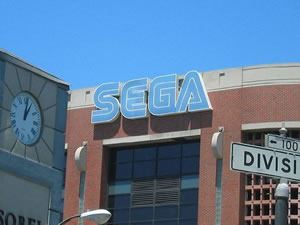 John Pedigo: In 1990 or ’91, I was working for a temp agency doing a variety of jobs. When a friend moved back to town, I got him a job at the agency, which hooked him up with a customer service rep position for Sega in South San Francisco. I was like HELLO… got the same job a few weeks later and we commuted from San Mateo to South San Francisco to be game counselors. If anyone has copies of Sega Visions, I’m one of the game counselors reviewed in one of the issues, sporting a swell mullet. I was a game counselor for a year and a half, then I joined the third party team, which tested all third party titles to see if they got the coveted Sega Seal of Approval, which was a joke. If the company was big enough, they’d get the seal even if their game was s****y. Later, I interviewed to be an associate producer for the product development team and got the job.
John Pedigo: In 1990 or ’91, I was working for a temp agency doing a variety of jobs. When a friend moved back to town, I got him a job at the agency, which hooked him up with a customer service rep position for Sega in South San Francisco. I was like HELLO… got the same job a few weeks later and we commuted from San Mateo to South San Francisco to be game counselors. If anyone has copies of Sega Visions, I’m one of the game counselors reviewed in one of the issues, sporting a swell mullet. I was a game counselor for a year and a half, then I joined the third party team, which tested all third party titles to see if they got the coveted Sega Seal of Approval, which was a joke. If the company was big enough, they’d get the seal even if their game was s****y. Later, I interviewed to be an associate producer for the product development team and got the job.
Sega-16: What did the landscape at SoA look like upon your arrival in September 1994? Do you recall any of the projects in development at the time, or the buzz over the impending launches of the 32X (in the U.S) and Saturn (in Japan)?
John Pedigo: I had been there for awhile, and the biggest buzz was of course Sonic. I think there was a growing concern for what Sony was up to. We were losing lots of people to SCEA (Sony Computer Entertainment America). The 32X was, of course, a weak reaction to the Sony threat. They should have skipped the 32X and just concentrated on the Saturn.
Sega-16: What were your typical duties and responsibilities as associate producer?
John Pedigo: I mainly handled localization products that were developed in Japan and brought over here. That meant making sure spelling was correct and that there wasn’t anything too offensive in the game, and getting it through QA (quality assurance) to publish. Mainly just making sure the developers and marketers had everything they needed to get their jobs done so we could get a game on the shelf.
Sega-16: As associate producer, what noteworthy game developers and/or top-level executives did you come into contact with?
John Pedigo: I worked for Ed Annunziata, the creator of Ecco the Dolphin, as well as Madeline Canepa, who co-founded Crystal Dynamics. I was also a game counselor and still friends with Jeronimo Barrera (VP at Rockstar). I had lunch one time with Tom Kalinske and walked the halls with Mark Cerny. Muhammad Ali once called me a “pretty boy” at a Sega CES (Consumer Electronics Show) event. I also helped Evander Holyfield score a touchdown in Joe Montana Football.
My coolest brush with fame was hanging out with Ronnie Montrose, an incredible guitar player who started the band Montrose (Sammy Hagar’s first big gig) and then later Gamma. He did the music for Mr. Bones (Sega Saturn), and we’d chat about music when he came in. He said my name sounded familiar, and it turned out he knew my dad back when they attended junior high in Denver, and used to hang out with my dad’s cousin as well. That was a pretty cool connection. Unfortunately Ronnie took his own life a few years back.
Sega-16: You worked on several Genesis and Game Gear games based on licenses such as Taz, Jurassic Park and Power Rangers. Did you collaborate with any of the respective license holders during the development of these games?
John Pedigo: I did very little on Taz and I don’t even think I did anything on Jurassic Park. I worked with Warner Brothers (Bugs Bunny Double Trouble), Saban (Power Rangers: The Movie) and Marvel (X-Women).
Sega-16: The Genesis version of Power Rangers: The Movie holds a soft spot for many fans of the series, myself included, due to its great rendition of the show’s soundtrack, which was penned by Saban’s Ron Wasserman. What was your involvement in this collaboration between Saban, SoA, and SIMS (the Japanese company which developed the game?)
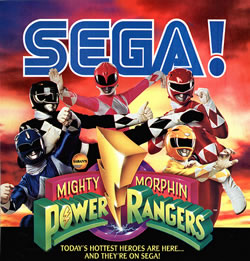 John Pedigo: I was involved quite a bit in the project. The success of the first game gave us a little clout, so between myself and the teams in Japan, we came up with the storyline, level concepts and mechanics. This was based on dailies I was getting from Saban while the movie was filming. I met Haim Saban in the Burbank offices of Saban. He was excited for the project, but I didn’t spend much time with him. The one thing that I can call my own in the game is the cut scene with the four panels that move the story forward. Everyone agreed on my cut scene suggestion, and it was super cool to think that these guys in Japan were making something which I laid out. When it showed up in the revs, I about peed my pants. The guys at Sega of Japan were blown away that the Power Rangers were so popular here in the U.S. They loved Super Sentai when they were kids, and to see it recycled on American TV fascinated them.
John Pedigo: I was involved quite a bit in the project. The success of the first game gave us a little clout, so between myself and the teams in Japan, we came up with the storyline, level concepts and mechanics. This was based on dailies I was getting from Saban while the movie was filming. I met Haim Saban in the Burbank offices of Saban. He was excited for the project, but I didn’t spend much time with him. The one thing that I can call my own in the game is the cut scene with the four panels that move the story forward. Everyone agreed on my cut scene suggestion, and it was super cool to think that these guys in Japan were making something which I laid out. When it showed up in the revs, I about peed my pants. The guys at Sega of Japan were blown away that the Power Rangers were so popular here in the U.S. They loved Super Sentai when they were kids, and to see it recycled on American TV fascinated them.
Sega-16: Kolibri was one of the handful of original titles released for the ill-fated 32X, and a unique one at that. Given that several 32X games, such as Virtua Hamster, Ratchet & Bolt and X-Men: Mind Games never made it to store shelves, what do you think enabled Kolibri to avoid the same fate?
John Pedigo: Cheap, hungry developers in Budapest and the expectation of another Ecco. I enjoyed watching the game develop. I did some concept stuff for it, but it never made it to the final version. I remember somebody in the media saying that a shooting hummingbird was stupid. I am reminded almost daily of this game, as we have a Frida Kahlo print of Autorretrato con Collar de Espinas y Colibri (Self-Portrait With Thorn and Hummingbird Necklace) in our bathroom.
Sega-16: Speaking of canceled games, were you involved in the development of any such titles during your time at SoA?
John Pedigo: X-Women is the only one that comes to mind. There were other concepts that we worked on which never saw the light of day.
Sega-16: In Bugs Bunny in Double Trouble, you were credited as “international liaison.” Did that entail similar duties to your associate producer role, or is there more of a story to that?
John Pedigo: When they asked, I should have just said associate producer, but this game sent me on my first trip abroad so I was being funny. This whole game has a story. I came into the project after it had started, and while it was being developed by Climax in England. It was slow going and Warner Bros. wanted to see some progress. Climax seemed shy about sending over the animation files to be approved by WB. Finally, this guy from Climax shows up with the files. I knew he didn’t like me, as he thought I was an “American twit” (as I was at the time). We then fly down to Burbank and proceed to review 800 animation files, but there was a problem after viewing a couple of files. Climax took it upon themselves to create a new Bugs Bunny by combining his old and new designs. Well let me tell you how WB felt about that… bomb goes off… cue head of WB licensing, and I quote…“WHAT THE F**K WERE YOU THINKING? DO YOU KNOW WHO BUGS BUNNY IS? DO YOU KNOW WHO THE F**K BUGS BUNNY IS? DO YOU F*****G REALIZE THAT THERE WOULD BE NO F*****G WARNER BROS. IF IT WASN’T FOR F*****G BUGS BUNNY…ARE YOU F*****G KIDDING ME…” and so on and so on for about 30 minutes.
We flew back to San Francisco and the dude wouldn’t even talk to me. I dropped him off at his hotel, and that was the last I heard from him. Next week or so, Climax dropped out of the project. After a quick search, we found another developer in England, Probe Entertainment. I thought to myself “hey these guys are cool, and they don’t mind that I’m an American twit.” I got my first chance to fly out to England, and spent two weeks with them going over each frame of animation and how to correct them per the Bugs Bunny Style Guide. Another six months down the road, I met up with WB again with the frames and a bit of gameplay, and suddenly all is right with the world. The head of WB licensing is happy, and she wishes us luck. We finished the project almost a year late, but it got great reviews. This is the game I am most proud of working on.
Sega-16: Having been there personally, what are your thoughts on the tumultuous transition period Sega endured during the mid-1990s?
John Pedigo: I don’t remember too many details about the business from back then. I know we lost a lot of good people to SCEA, and I think that was really the start of the end there. There were a series of missteps after that. They should have never done SegaSoft and HEAT.NET, even though those were some of my funnest times at Sega. During the development of HEAT.NET, a player matching system based on the Mplayer technology, they would yell that they needed 32 people for a Quake 2 game and we would all stop, jump in and just go to town for a couple of hours. The writing was on the wall when games started showing up with their own game lobbies… should have seen that one coming.
Sega-16: Our readers received a fascinating look into the enigmatic Clockwork Tortoise and the development of its trademark game, The Adventures of Batman & Robin, through a previous interview with artist Chris George. As assistant producer of the game, are there any anecdotes on the game’s development that you’d like to share in addition to Chris’s account?
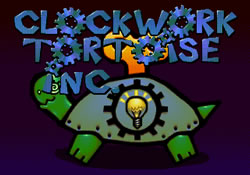 John Pedigo: Chris nailed it on the head. The description I gave you (in the pre-interview) is probably the most important story from that project. James Maxwell was lead for Clockwork. I didn’t really make the yea or nay on milestone payments; executive producers did that. James wheeled and dealed, on good faith, I think. They were at least two milestone payments behind, but (we) still got paid…Chris is right; James had a great passion for games, but as a manger he had some failings…
John Pedigo: Chris nailed it on the head. The description I gave you (in the pre-interview) is probably the most important story from that project. James Maxwell was lead for Clockwork. I didn’t really make the yea or nay on milestone payments; executive producers did that. James wheeled and dealed, on good faith, I think. They were at least two milestone payments behind, but (we) still got paid…Chris is right; James had a great passion for games, but as a manger he had some failings…
Sega-16: X-Women: The Sinister Virus seemingly was one of the few gems in the otherwise sparse 1996 release calendar for the Genesis. Could you tell us what the game’s basic premise, playable characters and gameplay would’ve been like?
John Pedigo: I spent two days at Marvel creating a story, but I can’t even tell you what it was about at this point. They loved the idea of an all-woman game. The main characters were Storm, Jean Grey, and Rogue. What we tried to do was add flying to the Batman mechanic, which I think that may have played a role in the game’s demise. Instead of the programmer trying to get the girls to fly, if we kept them on the ground we could have gotten further developing the game. Storm was going to have lightning attacks, Jean was able to grab hold of things and throw them, and Rogue would’ve just beat the crap out of everything. One fun thing that came out of it was that my friends and I got to do the voices for the game. We went to Jon Holland’s (VectorMan musician) studio in Petaluma, did voices all day and laughed our asses off… good times.
Sega-16: Did SoA have any big plans for X-Women going into the 1996 holiday season, which saw the company push Sonic 3D Blast, Vectorman 2 and Virtua Fighter 2 as its last first-party Genesis offerings?
John Pedigo: Yeah, we thought we were going to be the last Genesis first-party title.
Sega-16: How far along was development on X-Women before things went downhill? What was the death knell of the game, and ultimately Clockwork Tortoise itself?
John Pedigo: The art was done but no full levels, only one or two minor enemies and the start of the game mechanics. There were a combination of factors that led to its demise. Sega was moving away from 16-bit altogether, and X-Women was going to be the last Genesis game. As a producer, I failed because I became too good of friends with Clockwork. You can’t get too close to developers as friends, it takes the relationship in a direction that is not good for the project. We were going to raves and partying together outside of work, and I lost my status as the client. And when s**t hit the fan, I got no response on my threats. I got a lot of interference from my main programmer’s (John O’ Brien) wife… I think the pressure of following up the Batman title was too much for the guy, and they never hit one milestone. Cleverly, the coding was done in Assembly which made it almost impossible to find another programmer to work on it. The art was done though but Steve (Thomson), the artist, was like “I’m done and out of here” and moved back to England. I did visit him there a year or so later. A combination of all that killed X-Women. I have heard there is a director’s cut of most of it from Clockwork.
Sega-16: Do you recall the date or month in which X-Women was formally canceled?
John Pedigo: No.
Sega-16: Apart from a small blurb in the December 1996 issue of Electronic Gaming Monthly, the last public mention of X-Women appeared to have been in a press release announcing its inclusion in Sega’s Fall 1996 exhibit at Walt Disney World’s Innoventions museum. To your knowledge, did the game ever make it to that exhibit?
John Pedigo: It did not make it.
Sega-16: Did any X-Women prototype or beta ROMs survive the game’s cancellation?
John Pedigo: I had one for a little while, but it had degraded by the time I tried to fire it up a few years later.
Sega-16: Where did your job at SoA lead you to in the wake of X-Women’s demise?
John Pedigo: I ended up becoming a production artist on Cosmopolitan Virtual Makeover and Web Vengeance. When HEAT.NET showed up, I started doing HTML and banner ads.
Sega-16: What have you been up to in recent years?
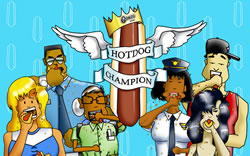 John Pedigo: I went all Internet after the game industry…HTML, e-mail campaigns and graphics for Alta Vista, Playstation.com, and CNET (Gamespot) up until a few years ago. I hate coding and finally decided to get some schooling in graphic communications and do something I love. I designed and did most of the art for a flash game on Addicting Games called Hot Dog Champion by Gonzo Games. It’s cool but not what I wanted to design. The higher- ups changed the gameplay on me, and I wish it were better. Recently, I have been working as a designer/illustrator for a some start ups and freelance. Also working on some designs and IOS apps… still painting and drawing. My Design/Illustration portfolio is at johnpedigo.com My Deviantart account (more art less graphics) –
John Pedigo: I went all Internet after the game industry…HTML, e-mail campaigns and graphics for Alta Vista, Playstation.com, and CNET (Gamespot) up until a few years ago. I hate coding and finally decided to get some schooling in graphic communications and do something I love. I designed and did most of the art for a flash game on Addicting Games called Hot Dog Champion by Gonzo Games. It’s cool but not what I wanted to design. The higher- ups changed the gameplay on me, and I wish it were better. Recently, I have been working as a designer/illustrator for a some start ups and freelance. Also working on some designs and IOS apps… still painting and drawing. My Design/Illustration portfolio is at johnpedigo.com My Deviantart account (more art less graphics) –
Sega-16: In retrospect, what do you make of your time working at Sega of America? Any regrets or life lessons learned?
John Pedigo: I loved working for Sega, until they shuffled me out the door… no regrets really, but I learned to not get too close with clients or vendors, and that your mantra as a product manager should be “follow up, follow up, follow up.”
Sega-16 would like to thank Mr. Pedigo for dedicating time for this interview as well as his great anecdotes!

Pingback: LHG Roundtable: Cancelled Games We'd Like To See Rise From The Ashes - VGU.TV